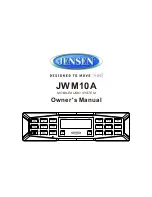
2-3 SHIFT VALVE
The 2-3 shift valve mechanism (Fig. 263) consists
of the 2-3 shift valve, governor plug and spring, and
a throttle plug. After the 1-2 shift valve has com-
pleted its operation and applied the front band, line
pressure is directed to the 2-3 shift valve through the
connecting passages from the 1-2 shift valve. The line
pressure will then dead–end at land #2 until the 2-3
valve is ready to make its shift. Now that the vehicle
is in motion and under acceleration, there is throttle
pressure being applied to the spring side of the valve
and between lands #3 and #4.
As vehicle speed increases, governor pressure
increases proportionately, until it becomes great
enough to overcome the combined throttle and spring
pressure on the right side of the valve. Since the
throttle pressure end of the 2-3 shift valve is larger
in diameter than the 1-2 shift valve, the 2-3 shift will
always happen at a greater speed than the 1-2 shift.
When this happens, the governor plug is forced
against the shift valve moving it to the right. The
shift valve causes land #4 to close the passage sup-
plying throttle pressure to the 2-3 shift valve. With-
out throttle pressure present in the circuit now, the
governor plug will push the valve over far enough to
bottom the valve in its bore. This allows land #2 to
direct line pressure to the front clutch.
After the shift (Fig. 264), line pressure is directed
to the release side of the kickdown servo. This
releases the front band and applies the front clutch,
shifting into third gear or direct drive. The rear
clutch remains applied, as it has been in the other
gears. During a manual “1” or manual “2” gear selec-
tion, line pressure is sent between the two lands of
the 2-3 governor plug. This line pressure at the gov-
ernor plug locks the shift valve into the second gear
position, preventing an upshift into direct drive. The
theory for the blocking of the valve is the same as
that of the 1-2 shift valve.
If the manual “2” or manual “1” gear position is
selected from the drive position, the PCM will control
the timing of the downshift by targeting for a high
governor pressure. When a safe vehicle speed is
reached, the PCM will switch to its normal control
governor curve and the downshift will occur.
3-4 SHIFT VALVE
The PCM energizes the overdrive solenoid during
the 3-4 upshift (Fig. 265). This causes the solenoid
check ball to close the vent port allowing line pres-
sure from the 2-3 shift valve to act directly on the 3-4
upshift valve. Line pressure on the 3-4 shift valve
overcomes valve spring pressure moving the valve to
the upshift position (Fig. 266). This action exposes
the feed passages to the 3-4 timing valve, 3-4 quick
fill valve, 3-4 accumulator, and ultimately to the
overdrive piston.
Fig. 263 2-3 Shift Valve - Before Shift
21 - 280
AUTOMATIC TRANSMISSION - 48RE
DR
VALVE BODY (Continued)
Содержание 48RE
Страница 4: ...Fig 1 48RE Transmission DR AUTOMATIC TRANSMISSION 48RE 21 133 AUTOMATIC TRANSMISSION 48RE Continued ...
Страница 48: ...HYDRAULIC FLOW IN NEUTRAL DR AUTOMATIC TRANSMISSION 48RE 21 177 AUTOMATIC TRANSMISSION 48RE Continued ...
Страница 49: ...HYDRAULIC FLOW IN REVERSE 21 178 AUTOMATIC TRANSMISSION 48RE DR AUTOMATIC TRANSMISSION 48RE Continued ...
Страница 50: ...HYDRAULIC FLOW IN DRIVE FIRST GEAR DR AUTOMATIC TRANSMISSION 48RE 21 179 AUTOMATIC TRANSMISSION 48RE Continued ...
Страница 57: ...HYDRAULIC FLOW IN MANUAL LOW 1 21 186 AUTOMATIC TRANSMISSION 48RE DR AUTOMATIC TRANSMISSION 48RE Continued ...
Страница 58: ...HYDRAULIC FLOW IN MANUAL SECOND 2 DR AUTOMATIC TRANSMISSION 48RE 21 187 AUTOMATIC TRANSMISSION 48RE Continued ...
















































